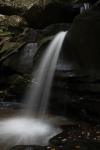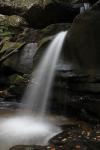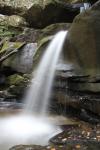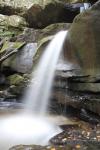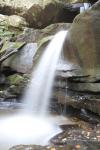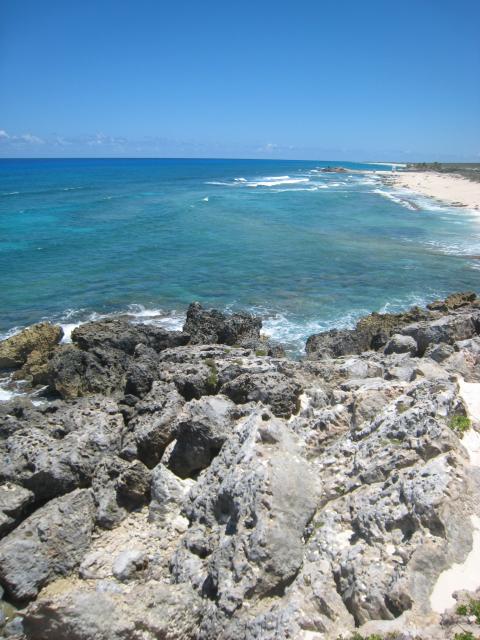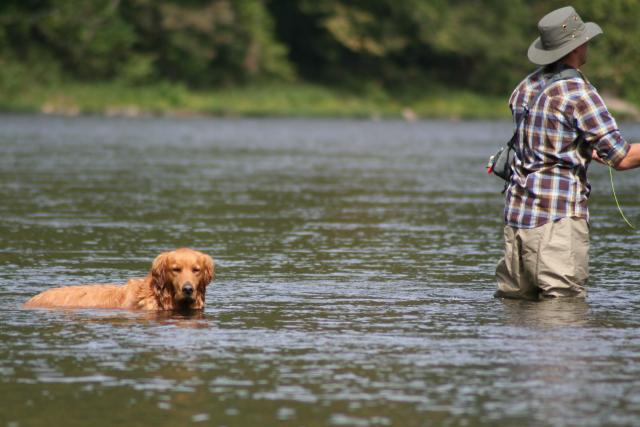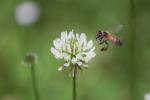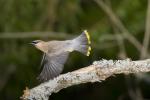landscape
Time Spent at the Falls
ktuli — Fri, 10/01/2010 - 18:58
Ok - hopefully I can keep my promise from my last post and provide something a bit more appealing today.
Not too long ago, I took a trip up to McConnell's Mill State Park. I really love going to this park, but honestly, I get mixed results with my photography there - I never know whether I'll come back with stuff I like, or a whole card worth of images to delete.
This trip, as I was driving there, I thought about what kind of photography I would like to do that day. Sometimes this works out and I manage to get exactly what I wanted, but more often than not I miss the mark altogether. Most days, I try to head out with no plan whatsoever and just capture whatever I can find. Both ways work, and I flip back and forth between them.
As I cruised up I79, listening to Lotus, I thought perhaps I should delve into HDR. And with that in mind, I decided to take multiple exposures of any shots I did.
Here's one set of results... (if you hover your mouse over one of the thumbnails, it will change the larger image, then you can slide along the row of thumbnails to see the progression in exposure - if it is the first time through, be patient as sometimes my server is a little slow and the image might take a moment to load).
Technical Data: Canon EOS 7D, Sigma 10-20mm f/4-5.6 EX DC HSM AF at 16mm, 1.3, 2, 3.2, 5.2, 8, 12, 21 sec respectively at f/28.1. ISO 200. Dolica AX620B100 tripod. No post production. McConnell's Mill State Park, Lawrence County, PA.
So for the most part, a lot of those images don't really work by themselves, but the hope is that I can eventually run these through some HDR processing and get a super image out of them.
If you're unfamiliar, HDR works by taking a set of differently exposed images and merging them into a single image with a much greater detail by including a high dynamic range of sensitivity from the darkest to lightest details. Our eyes naturally can see a much wider range in sensitivity to light than our cameras can, so using a post production process like this is the way around that limitation.
I'll be honest, I've never done any HDR work before, so hopefully this works and then I'll eventually share the final product here.
Thanks for stopping by, leave a comment and let me know what you think of these photos or any experience you have with HDR.
- Bill
Poll: Punta Sur: Horizontal or Vertical?
ktuli — Thu, 08/12/2010 - 19:56
Ok - still no luck with getting our internet connection fixed up at home. Comcast is already annoying me, and they haven't even even installed yet - but then again, that's why they're annoying me. Which means I have five sets of photos waiting to upload, so you'll have to bear with me a bit longer here and wait for the Vintage Grand Prix photos as well as some photos I took for Anya's Card Blog, and of course more nature photos.
Anyway.......... I am going to switch gears a little and make a post specially for my mom. Today she asked me why I had so many weird photos on the site recently, and actually called my cactus photo from the other day "a little creepy". I'm not quite sure what she meant by that, but she asked for more landscapes or "cute baby" photos (ie: my six nieces and nephews - her grandchildren). Well, I'm not so big on the baby photos - heck, I'm not even that big on any kind of portraits. But I do work in some landscape stuff from time to time. So here you go, mom...
Technical Data: Canon PowerShot SD800 IS Digital Elph at 4.6mm, 1/320 sec (horizontal) and 1/250 sec (vertical) at f/7.1. ISO Auto. No post production. Punta Sur, Cozumel, Mexico.
So we'll ignore some of the technical errors with these photos - like the sloping horizons - and just focus on the orientations. Do you like the horizontal or the vertical view better?
Either way, I wouldn't mind another trip to Cozumel. There are some white sand beaches there (and even a small one in the photo), but usually the beaches are rocky as you can see at the bottom of both photos. But the water is crystal clear and bright blue, and the sky mirrors the bright blue water (or is it the other way around?). Either way, I'd love to take mom and the rest of my family on a trip to the beach, and I definitely wouldn't mind a scuba trip or three.
Anyone have any winning lottery tickets they're not going to use?
- Bill
Horseshoe Falls & Light Rays
ktuli — Fri, 07/16/2010 - 18:09
I need another trip up to Niagara Falls. It has been almost three years since I was there last, and it has always been one of those places I've really liked - ever since I was a child. I remember going with my family when I was younger, and the most recent trip was made specifically to get engaged, so obviously it holds special meaning for me.
I know I just got back from vacation not too long ago, but I could use at least a quick weekend trip.
Technical Data: Canon EOS Digital Rebel XT, Canon EF-S 18-55mm f/3.5-5.6 II at 27mm, 1/320 sec at f/13, ISO 100. No post production. Niagara Falls, Ontario, Canada (yes, if you want to go to NF, it really is only worth going to the Canadian side).
Obviously, the main challenge with photographing Niagara Falls is to capture the power of the falls, and the awe inspiring nature of it, and the absolute grandeur of something that can't help but make you feel the overwhelming feeling that this world is shaped by forces far beyond our comprehension. Good luck... ;)
- Bill
Strange Polarized Clouds
ktuli — Mon, 07/12/2010 - 19:26
I can't explain what happened in this photo. I'm sure I did something wrong, but I don't know what it was. Maybe someday I'll learn how to explain it, but for now, it just looks weird.
Technical Data: Canon EOS Digital Rebel XT, Canon EF 35-80mm f/4-5.6 III at 35mm, 1/200 sec at f/10. ISO 400. Circular polarizing filter. No post production. Virgin Run Lake, Fayette County, PA.
We only have one polarizing filter and it only fits a couple lenses that don't get much use, but I made a point of trying it out one Saturday last October. Anya and I had been out looking for nice fall foliage (which as you can see by the photo, we were a bit early for even at this point in October) and stopped by Virgin Run Lake.
A polarizing filter works by reducing light of a specific wavelength - for all functional purposes, this means reflections. Since most reflections from the same source will have the same wavelength, the filter is able to reduce it enough to make it appear to remove it. You may notice that the sky is much bluer (not in this photo) in photos with a polarizing filter, this is because the filter is working on reflections from water particles in the air, thus producing the bluer color.
However, in this photo, I must have had the filter turned the wrong way (circular polarizers work by rotating to filter the wavelength of light you prefer), which resulted in a very flat sky and fake looking clouds.
What do you think?
- Bill
Remember Color in the Sky?
ktuli — Mon, 03/01/2010 - 20:59
Today was one of those days. Just a horrid Monday.
And the fact that the only color outside my window at work is grey. Lots and lots of grey.
So just a quick post today to remind everyone what a sky with some color looks like...
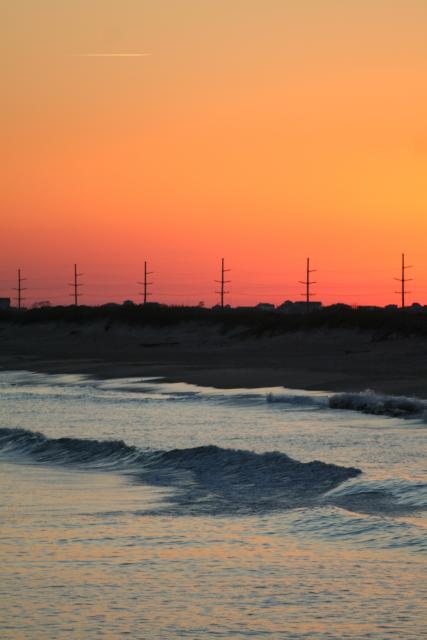
I did get some good news today, though. I got an email from Adorama saying that my new Sigma 150-500 is shipping. So hopefully before the end of the week I'll have a new toy to play with, and some photos to share from it.
One of these days I'll get back to a normal routine. Till then, enjoy the sky with something other than grey in it.
- Bill
Take Advantage of Situations
ktuli — Sun, 02/21/2010 - 16:40
I don't normally take photos of people. I don't know why, it just really isn't my thing. For whatever reason, I feel more comfortable tracking down a tiny little insect than I do trying to take photos of people.
On one occasion, I was out taking photos, and doing my usual thing - which in this case was chasing a butterfly. A guy and his dog wandered into the area where I was shooting. For a while I continued chasing the butterfly, but then stopped and watched as the guy began fly-fishing and his dog followed his every move. The scene started to take on the feel of a photo I'd see in a magazine.
So I decided to take advantage of the situation and step out of my comfort zone and try something new. After asking the gentleman if he minded if I took some photos, I started firing off shots.
Technical Data: Canon EOS Digital Rebel XT, Tamron 70-300mm f/4-5.6 Di LD Macro1:2 at 300m, 1/2000 sec at f/5.6, ISO 400. No post production. Cedar Creek Park, Westmoreland County, PA.
Why This Photo: I really liked the way the dog followed his owner, the scene really played out like something I thought looked like a 'classic' photo.
What Works: The eye contact with the dog provides some engagement into the scene, and I think counterbalances the fact that the fisherman is looking out of the frame. And even though you can't tell this from the photo, I think the fact that I stepped out of my comfort zone really counts for something here.
What Doesn't Work: First, this is something that bugs me a lot, yet I do it often - the horizon is not level (I've bought a bubble level to help work on this!). The framing is a bit poor, and pulling back the focal distance a bit - maybe to just 250mm would have made for a much nicer shot. Finally, the reflections are a bit distracting, I don't have a polarizing filter for this lens, but this might have been a good place for one.
The bottom line is that this isn't the greatest shot, but I took advantage of an opportunity and tried something a little new with my photography. I know that my favorite photography is macro, but I really am trying to work on expanding out into other areas, and taking advantage of a situation when it presents itself will be key to getting into that.
- Bill
Work the Scene
ktuli — Wed, 02/10/2010 - 21:53
Something I've learned is to work a scene until you're pleased with the results. Sometimes I am better than others with maintaining the patience necessary to do this. Quite often I'm guilty of not spending quite enough time to get the shot I want, but I'm working on correcting that.
Another item is to feel free to clear up distracting elements in your shot. Most of the time with outdoor photography, this is random twigs or dead leaves. They usually take away from a shot, and a few moments makes for a much cleaner shot.
At the same time, however, one needs to weigh how much of a change you want to make to an environment - certainly I don't condone doing anything that would affect any wildlife or even the micro-environment in which you're working. As a outdoor photographer, you almost automatically have to be a conservationist.
Anyway - back to the item at hand. Working the scene.
 |
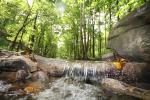 |
||
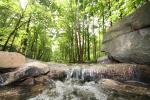
|  |
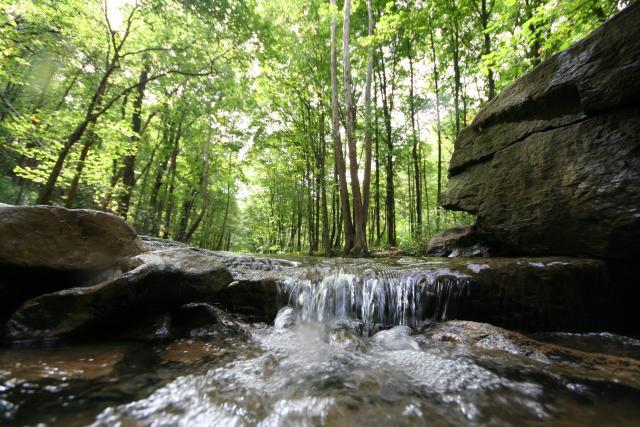
Technical Data: Canon EOS Digital Rebel XT, Sigma 10-20mm f/4-5.6 EX DC HSM AF at 10mm, 1/60 sec at f/5.6, ISO 400, No Flash. No post production. Cedar Creek Park, Westmoreland County, PA.
It is a little tough to see from each of the small photos (but you can click on them to see larger versions), but through the series of taking these photos, I went through the following changes to finally get the shot I liked most:
- Changed focal length from 20mm to 10mm
- Removed random distracting debris (dead leaves)
- Tried multiple small angle adjustments (especially leveling the horizon)
- Turned off the flash
- Took several more shots to get a favorable capture of the stream motion
The first shot is very dull and probably would have been deleted if I didn't specifically keep it as a reference to remind myself to do these kinds of things to get a more favorable shot. In the end, I have a shot that I like very much and has a much more powerful effect.
Had I not removed the dead leaves, the scene would easily be identified as a small rock in a stream - without that distracting debris, the scene looks like it could be a very large boulder instead. The removal of the flash certainly adds to that illusion of a larger subject.
I took these shots while leaning over another rock into this stream. I was not able to look into the viewfinder for any of these shots (another technique I like to use from time to time which I'll discuss some other day).
As I think back on it, it felt like I spent much longer at this spot than I really did - the timestamps of the files only differ by about two minutes. I guess this is another argument for the benefit of reviewing your photos while still out in the field. I was able to go from a poor image to a half-way decent image with a lot more character.
Whether you spent two minutes or twenty minutes or two hours, remember to try and work the scene and walk away with an image you are happy with rather than regretting not spending the extra time and having nothing else to show for it.
- Bill
Snowmageddon!
ktuli — Sat, 02/06/2010 - 22:24
So this might be a bit cliche, but I'm going to post my own Snowmageddon photos. Not going to get bogged down with critiquing or anything like that today.
So all told, I think we got about 22" worth of snow near our house. We lost power for about 12 hours. The temperature in the house had dropped all the way to 56F before the power came back and the furnace kicked back on. We were definitely happy that it did - we weren't looking to a cold night with no heat.
I headed out once in the late morning after we had shoveled the driveway partially clear, and then snapped a couple more through a window when the skies cleared and provided a bright blue sky. Enjoy.
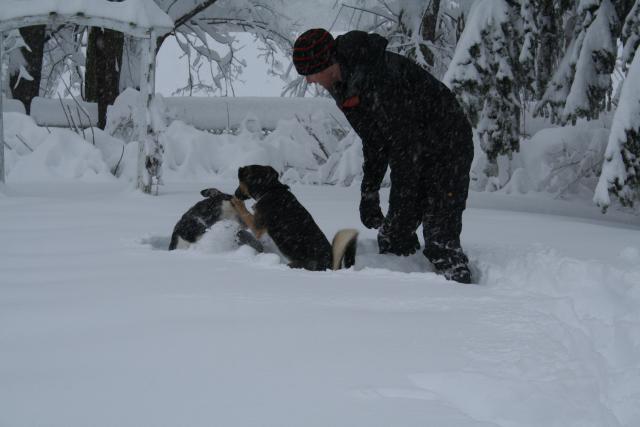
Yes - that is snow up to my knees and to the tops of our dogs' backs.
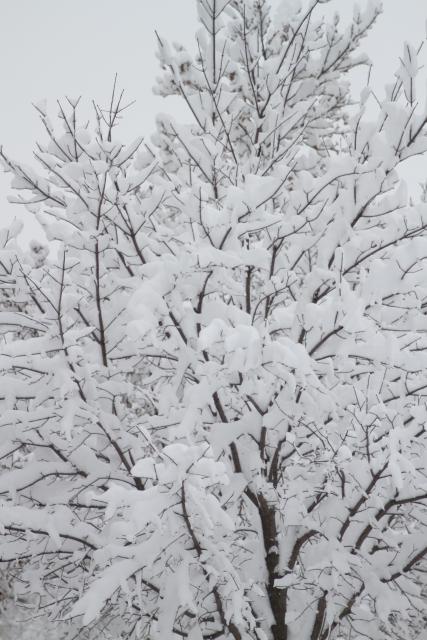
There were lots of broken branches, and with that much snow, it is no wonder.
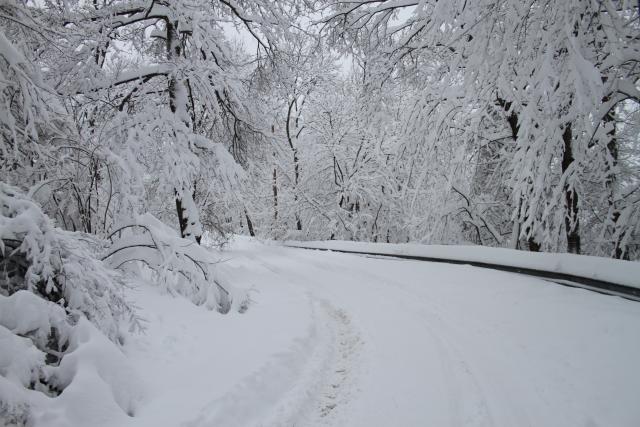
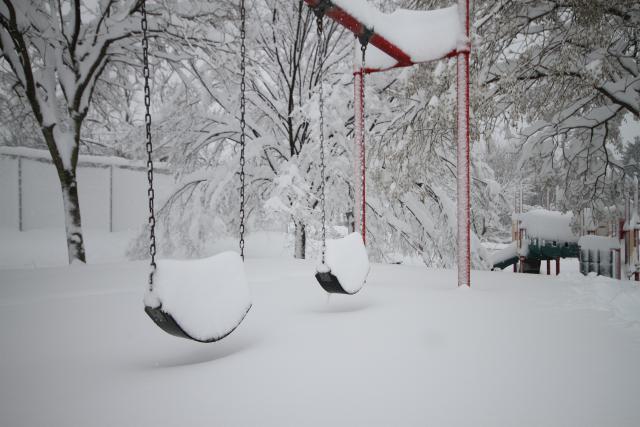
Probably hard to swing on those today...
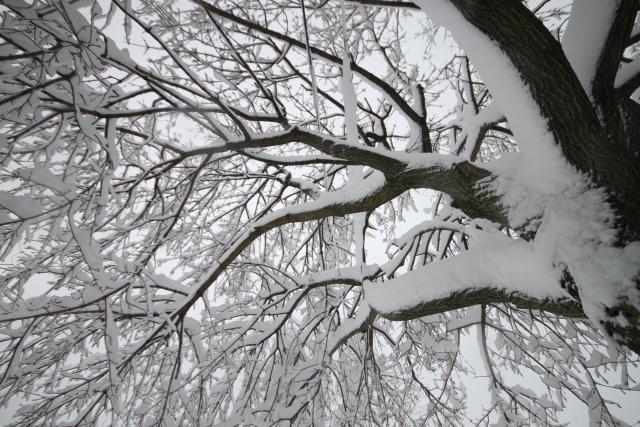
A different angle from the base of a tree
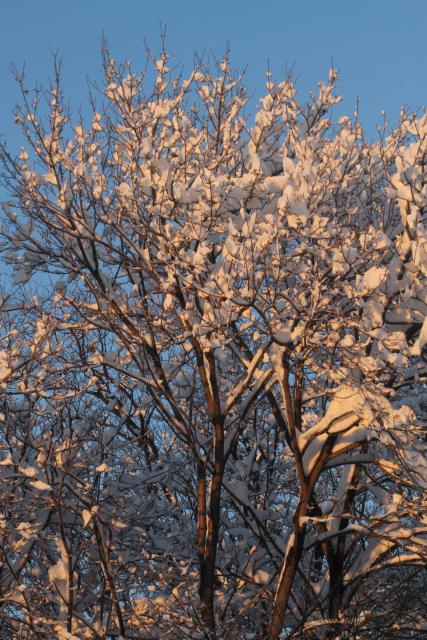
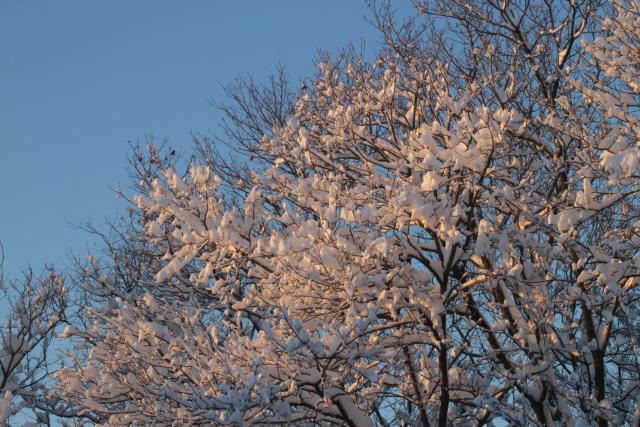
Such a beautiful blue sky!
What a day. Hopefully everyone else got their power back and are nice and warm tonight!
- Bill
Poll: Flash or No Flash?
ktuli — Sat, 01/30/2010 - 20:26
Yet another style of post to try out today...
Sometimes, I try multiple settings for a photograph and then when I get home I either forget to delete the lesser quality shots or as is more often the case, debate which version is better. Sometimes I'll have multiple versions of a photo that I like each version for various reasons.
That's where you come in - from time to time, I'll post those multiple versions and leave it open to a vote as to which version is the best.
Today's photo set was done as easily as using the flash for one shot and not using the flash for the other.

Flash Version Technical Data: Canon EOS Digital Rebel XT, Canon EF 80-200mm f/4.5-5.6 II at 89mm, 1/60 sec at f/4.5. ISO 400. Flash Auto. No Post Production. Near Frisco Pier, Cape Hatteras, NC.

No Flash Version Technical Data: Canon EOS Digital Rebel XT, Canon EF 80-200mm f/4.5-5.6 II at 89mm, 1/13 sec at f/4.5. ISO 400. Flash Off. No Post Production. Near Frisco Pier, Cape Hatteras, NC.
Honestly, I'm torn! I can't decide which version I like better. What about you?
Cast your vote, leave some comments to back up your vote!
- Bill

